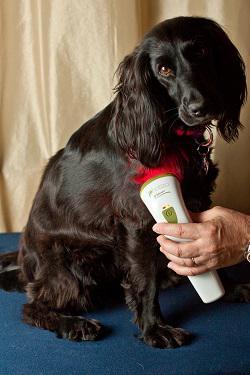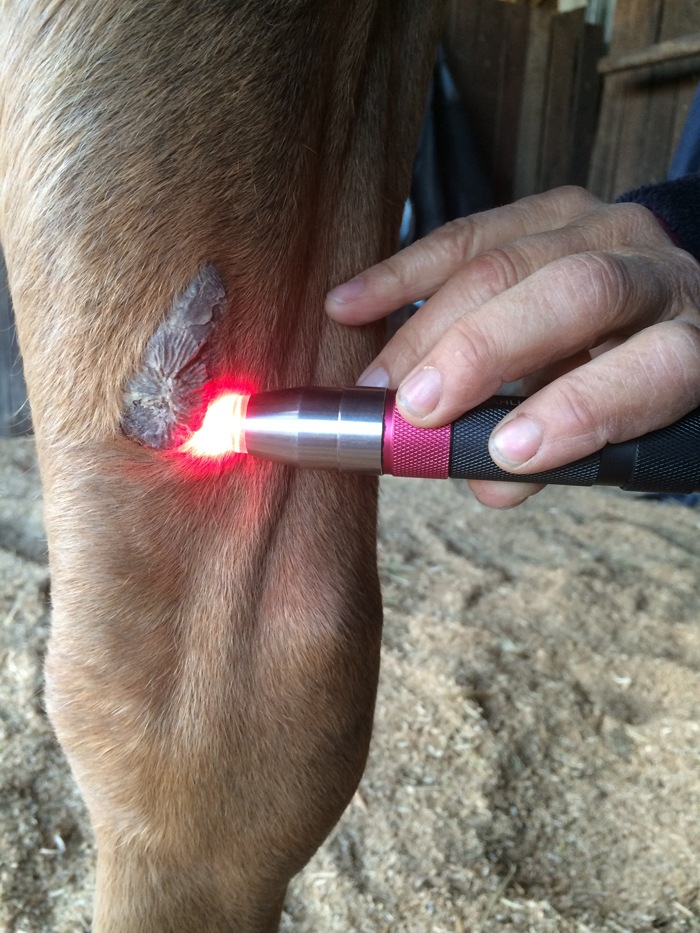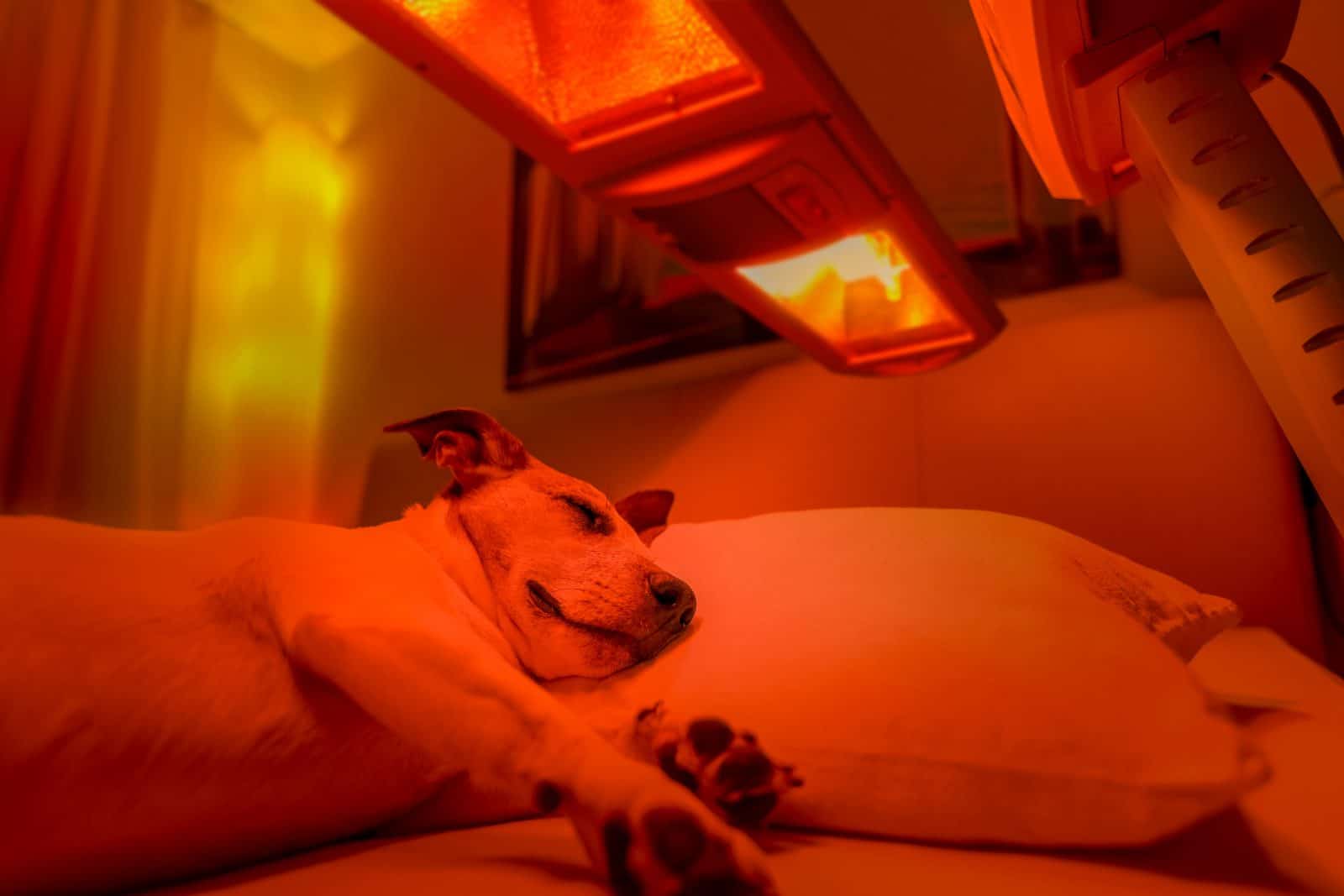Red light therapy (commonly referred to as LLLT) has been researched and studied for decades because of its mechanisms, applications and the positive effect it can have on both the immune and endocrine systems. Although still considered an ‘alternative treatment’ in the western world of medicine, LLLT has grown in both its use and popularity because of the health and cosmetic benefits it offers humans. However, because of red light therapy’s enormous healing capabilities, many veterinarians across the globe also believe it to be a safe, effective method for treating a broad range of health conditions in animals.
How red light therapy works for animals
Red light therapy works for animals much in the same way it does for humans. Treatment involves the use of a low-powered red light that penetrates wavelengths (in the range of 600-800nm) directly through an animal’s skin. Once absorbed into the skin, these wavelengths have the ability to transform into cellular energy and ‘kick start’ a series of metabolic events. Two of the most important reactions being: the stimulation of collagen production and the increase of adenosine triphosphate (ATP); which causes a boost of energy to the cells (1). Affecting all layers of the skin, red light therapy can reach blood vessels, lymph pathways, nerves, and hair follicles, etc. – dependent on which part of the animal’s body the red light is projected. LLLT offers the following benefits for animals of all shapes, sizes and breeds:
- Heals and repairs tissue
- Reduces pain and inflammation
- Improves joint and muscle health
- Increases blood circulation
What animals can benefit from LLLT?
Although optimal treatment will vary for each species, red light therapy has proven to help small farm animals to larger animals such as horses and elephants. It has also shown great potential for treating domestic pets. Strong evidence indicates that LLLT is quite successful in helping a range of conditions in animals such as skin infections, rashes, eczema, and joint problems. Certainly the size of the animal, as well as the amount of fur on its coat, will need to be taken into consideration in regard to treatment time and intensity. Animals with a thicker coat will require the appropriate exposure; generally, higher quantities of light and longer treatment protocols in order for the red light to be absorbed into the skin.
Dogs- Red light therapy is a pain-free effective treatment for variety of conditions and medical issues that can affect domestic canines. Treatments of LLLT can help heal wounds, stimulate hair regrowth, minimize (or eliminate) skin issues, suppress ‘kennel cough’, relieve nervous tension, and aid in recovery from surgery. It has also proven to be effective in helping both acute and chronic conditions such as arthritis- which many dogs become susceptible to as they grow older.

Cats- Most cats seem to enjoy LLLT therapy because of the glow emitted from the red light. Although useful for a number of conditions (skin, ear infections, allergies etc.), sessions of red light therapy can also accelerate recovery time and healing from being spayed or neutered. One of the greatest benefits of LLLT for a feline is the treatment of ischemic kidney failure. Continual sessions of red light therapy have shown to significantly help ‘open up’ the blood circulation into the kidneys, and ‘wake up’ cells that are still living, but have inadequate blood flow. (2)
Horses- Typically referred to as ‘equine light therapy,’ LLLT has quickly become a popular form of treatment by many ‘horse doctors’. Used for a wide range of common problems affecting horses, it has proven beneficial for treating chronic pain (arthritis, navicular and laminitis), sore muscles, lameness, wounds and tendon injuries, colic and hoof abscesses. (3) In fact, one study shows that when LLLT was administered to 14 race horses suffering from chronic back pain for years, 10 out of the 14 horses responded so well to treatment they were able to continue performing at a standard acceptable for training and competition. (4)

Cows-Red light therapy has shown to be enormously successful in treating dairy cows that suffer from various conditions that effect their milk production. Studies indicate significant improvement in the treatment of teats affected by wounds, inflammation or infection. LLLT on cows produced a reduction in inflammation and faster skin regeneration with cows returning to an optimal production of milk in just a few sessions of continued red light therapy treatments.(5)
Chickens and Hens– LLLT has proven effective for longer and higher peak production of eggs because it has the capability to activate the reproduction axis in poultry. The mechanisms of red light therapy also have the ability to stimulate growth and initiate the release of hormones in chickens. (6)
Hamsters- Red light therapy and its effects on hamsters have been studied as intensively as rats and mice. Studies show evidence that LLLT’s anti-inflammatory mechanisms are especially effective in the treatment of mouth ulcers in hamsters-reducing the time it takes to heal with minimal pain (7)
Choosing red light therapy for your animal
Animals, just like humans, suffer from a number of conditions and illnesses. Although often occurring with the onset of old age, many animals can experience a range of problems throughout their lives. As the research and studies continue to progress, red light therapy has quickly gained popularity as one of the most cost-effective, pain-free alternative treatments for animals of every species. In the past decade or so, it has become especially favorable for household pets. LLLT offers pet owners alternative non-evasive treatments with positive results for their beloved furry friends-rather than traditional options of costly (and sometimes harmful) medications, painful surgeries and prolonged recoveries.
Similar to any decision you make about your animal’s health, it will be important to consult with your veterinarian if you are interested in red light therapy as an alternative treatment option. Whether you choose to have sessions at a qualified practice or want to administer treatments yourself with a home-use device- the best advice is to do your research first! Familiarizing yourself with wavelength ranges, light intensity and duration of treatment times for specific conditions, will enable you to make an informed decision on administering treatment. More importantly, knowing the facts will enable you to make a decision that is in the best interest of your pet, or the animal you plan on treating.
(1) C, Stockburger, et al. “Improvement of Mitochondrial Function and Dynamics by the Metabolic Enhancer Piracetam.” NCBI, Biochem Soc Trans, Oct. 2013, www.ncbi.nlm.nih.gov/pubmed/24059528.
(2) “Infrared Light Therapy for Kidney Failure, Incontinence and Arthritis in Dogs and Cats.” A Path With Paws, A Path With Paws, 20 Oct. 2012,
(3) Casie. “Red Light Therapy for Horses.” The Naturally Healthy Horse, © The Naturally Healthy Horse 2016 – Site Support & Design by Willoid.com, 5 Mar. 2014,
(4) Jr, Martin BB, and Klide AM. “Treatment of Chronic Back Pain in Horses. Stimulation of Acupuncture Points with a Low Powered Infrared Laser.” NCBI, Vet Surg, 1987,
(5) SM, Ghamsari, et al. “Evaluation of Low Level Laser Therapy on Primary Healing of Experimentally Induced Full Thickness Teat Wounds in Dairy Cattle.” NCBI, Vet Surg, 1997,
6 Baxter, M., et al. “Red Light Is Necessary to Activate the Reproductive Axis in Chickens Independently of the Retina of the Eye .” OXFORD ACADEMIC, © 2014 Poultry Science Association Inc., 28 Apr. 2014,
7) CM, França, et al. “Low-Intensity Red Laser on the Prevention and Treatment of Induced-Oral Mucositis in Hamsters.” NCBI, J Photochem Photobiol B, 9 Jan. 2009


How do you know what setting you use for each animal for the light therapy.
my only question is….if humans have to wear eye protection. Why is the dogs eyes unprotected?